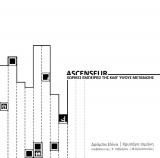Supervisors:
2012
The primary need to move products or people up to a certain height produced the earliest forms of elevators. The first elevator, in the modern sense, was brought to existence by Elisha Otis. He invented a brake that was designed to prevent the free fall of the lifting platform in case of accident and thus, he adjusted it to the existing lifts. After succeeding in providing security to the passengers, the elevator became widely used and this resulted in transforming the city’s landscape, by enabling people to inhabit very high buildings. Consequently, urbanization emerged and broke away from its original boundaries.
However, the elevator cabin remained typical, depriving the passenger of the possibility to develop emotional attachment to its interior space. Inside the non-space, function reigns. At the same time, aspects of space such as dimension, symbols, equipment and music, influence the passenger, causing in extreme situations psychological disorders like claustrophobia.
As part of the building’s architecture, the elevator can be a hidden or a dominant structure, connecting floors of different uses. Because of its dimension and relation to the house, it is often treated as an extension of the residence. Furthermore, artists are frequently inspired by that characteristic, resulting in exhibitions that focus on the cabin’s interior.
In conclusion, the elevator is a space defined by a lot of parameters. From space of uneasiness it transforms to meeting point, as personal relationships emotionally charge the cabin. Every 'journey' is different, since it’s highly dependable on the alternative scenario that is hosted in its interior. From another perspective, the elevator incarnates the extreme, everyday environment of the modern man, as it disappears into routine. Due to the variety of social dynamics that arise inside the cabin,an elevator can be also viewed as an experimental model of exploring senses and grounds that draw apart from a common point, shedding light in human behavior. Being both a multispace and a non-space, the elevator doesn’t cease, despite the variety that its interior space displays, to transform in the same time its surrounding environment, releasing the third dimension.
